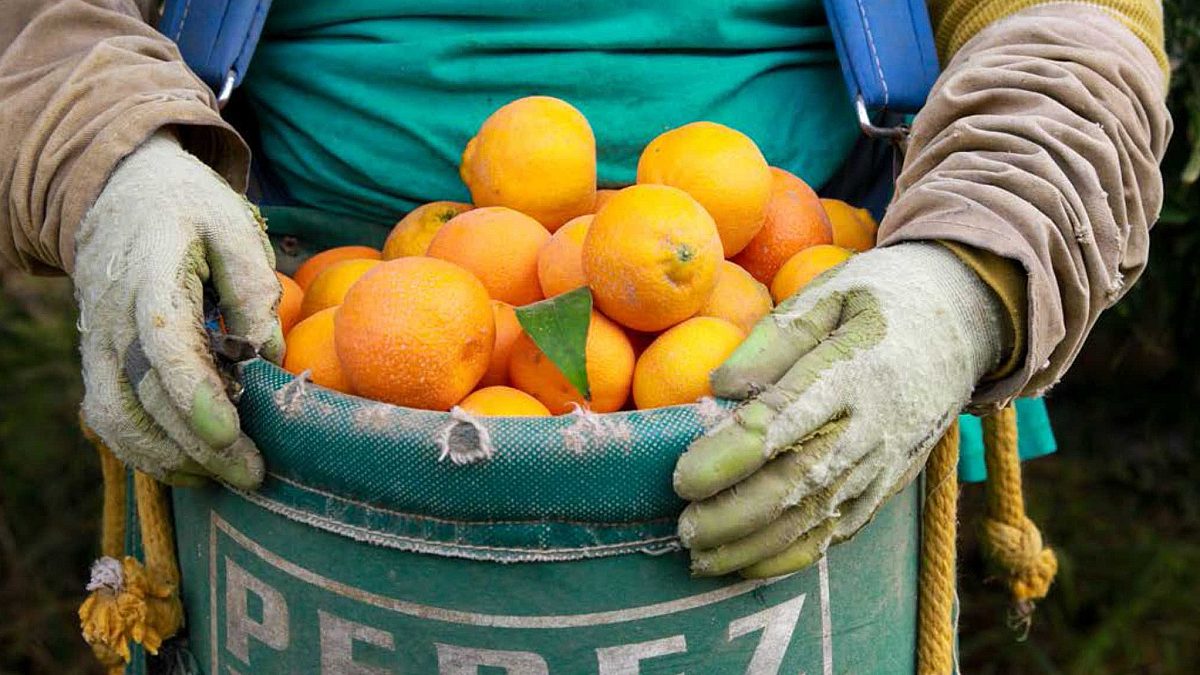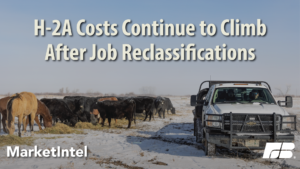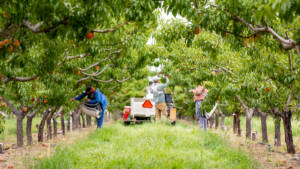Labor Challenges Increase Farm Economy Pressures
Bailey Corwine
Communications Manager

photo credit: Kelly Neufeld, Used with Permission
Bailey Corwine
Communications Manager
Labor demands continue to tax the bottom lines of farmers and ranchers, with rising wage rates and record usage of the H-2A visa program. Meaningful reforms to the federal government’s guest worker program must be a priority for Congress by the end of the year.
The American Farm Bureau Federation, along with more than 350 other food and farm organizations that are part of the Ag Workforce Coalition, sent a letter urging the Senate to pass legislation to address the nation’s agricultural workforce challenges before the end of the 117th Congress. The House of Representatives has passed a farm labor reform bill, but the legislation needs improvements to adequately address pressing needs facing agriculture.
“Without immediate action by the Senate, the federal government’s outdated policies and broken immigration system are forcing many farmers to consider whether they can continue in labor-intensive agriculture,” the groups say in the letter. “The country cannot afford for the Senate to miss this opportunity to provide stability to both farmers and farmworkers.”
Recent analysis from AFBF economists indicates that costs associated with farm labor will add to the ever-expanding list of factors straining the farm economy in 2023. In fact, a recent AFBF Market Intel, Examining the 2023 AEWR, states some farmers and ranchers could see an increase in farm labor costs of up to $2 per hour for each employee.
“Unlike in 2021, every farm labor region and state experienced a higher average wage rate in 2022 and will subsequently have a higher Adverse Effect Wage Rate in 2023,” Senior Economist Veronica Nigh explains in the Market Intel. “The Appalachian II region (Kentucky, Tennessee and West Virginia) had the smallest increase in terms of dollar per hour and percentage, with a 37 cents per hour or 2.7% increase. Florida had the largest percentage increase – 15.5%. The Lake region (Michigan, Minnesota and Wisconsin) had the largest increase in dollar terms – $1.97 per hour. Once again in 2022, California had the highest overall wage rate at $18.65 per hour.”
This data is important to farmers and ranchers who access the H-2A visa program, which saw its highest-ever utilization rate in 2022.
“It is also worth noting that in addition to strong growth in the number of certified positions in fiscal year 2022, there was also a 15% increase in the number of H-2A applications filed. This suggests that the universe of operations that are utilizing the program is also growing, rather than the growth coming strictly from existing operations,” Nigh explains in Another Year of Explosive H-2A Growth.
With rising input costs across the board, but not necessarily rising prices for their products, farmers and ranchers will yet again have to grapple with how to make ends meet in 2023, but Congress can help ease the burden by passing meaningful farm labor reform before the end of 2022.
Full text of the Ag Workforce Coalition’s letter to Senate leadership is available here.
To read the Market Intel on the Farm Labor Report, click here. To read the Market Intel on H-2A usage, click here.
To have AFBF Market Intels delivered to your inbox, subscribe now.
Press Contact
Mike Tomko
Director, Communications
(202) 406-3642
miket@fb.org
Bailey Corwine
Media Relations Specialist
(202) 406-3643
baileyc@fb.org
Top Issues
VIEW ALL



